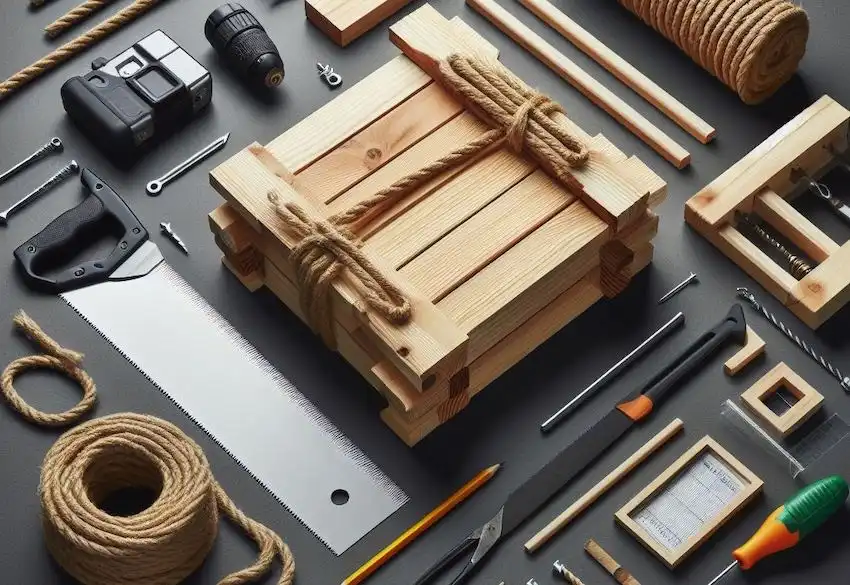Creating a rope ladder involves selecting the right materials, understanding different methods, and ensuring safety. Here’s a comprehensive guide on how to make a rope ladder:
Types of Rope Ladders
- Tied Rope Ladder: Uses round rungs like broom handles, tied into the rope strings.
- Drilled Step or Rung Ladder: Features flat plank rungs with rope passing through, secured by knots.
- All Rope Ladder: Entirely made of rope, it’s complex and less user-friendly.
Making a Tied Rope Ladder

Materials Needed:
- Rungs (broom handles or similar)
- Durable rope (for outdoor use, select a hard-wearing variety)
Tools Required:
- Saw (for cutting rungs)
- Pencil and tape (for measuring)
Steps:
- Prepare Rungs: Cut broom handles to uniform lengths (around 40cm).
- Find the Center of Rope: If using a single rope, identify the middle as the top of the ladder.
- Attach Rungs: Space rungs evenly along the rope. Attach each rung with a Marlin Spike Hitch.
- Secure Rungs: Ensure knots are tight and rungs are evenly spaced.
- Finalize Ladder: Adjust rung spacing and ensure level alignment.
Making a Drilled Step Rope Ladder

Materials Needed:
- Planks (for rungs, preferably treated for outdoor use)
- Strong synthetic rope
Tools Required:
- Drill with appropriate bit
- Pencil & tape (for marking)
Steps:
- Prepare Rungs: Cut planks to desired length (40-50cm typically).
- Drill Holes: Mark and drill holes for the rope slightly larger than its diameter.
- String Rungs: Thread the rope through the rungs, spacing them out.
- Secure Rungs: Tie simple knots at each desired rung position and adjust for even spacing.
- Finalize Ladder: Ensure rungs are level and evenly spaced.
Fixing the Rope Ladder in Place
- Tied Rope Ladder: Create a loop at the top for hanging. Secure the bottom to the ground to prevent swinging.
- Drilled Step Ladder: Use ropes with spliced eyes for easy attachment to anchor points. Secure the bottom as with the tied ladder for stability.
Selecting the Right Rope
- For Tied Ladders: Use thinner, possibly braided polyester rope for easier knotting.
- For Drilled Step Ladders: Choose thicker, 3-strand rope for a robust build.
- General Advice: Synthetic ropes are preferable for durability, especially outdoors. Consider ropes with spliced eyes or ends whipped for neatness and safety.
Safety and Maintenance
- Regularly inspect the ladder for loose knots or rung displacement.
- Ensure the ladder is secured firmly at both the top and bottom.
- If used by children, ensure additional safety checks and supervision.
Additional Tips
- Practice tying knots before starting.
- For permanent setups, consider constrictor knots for greater security.
- Customize the ladder length and rung spacing according to your specific needs and usage scenario.

By following these guidelines, you can create a safe and functional rope ladder for various purposes. Remember to prioritize safety and regular maintenance checks to ensure the ladder’s reliability and longevity.
